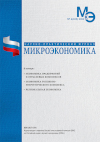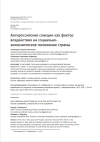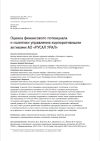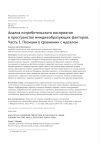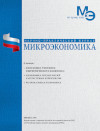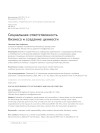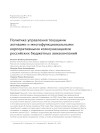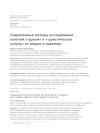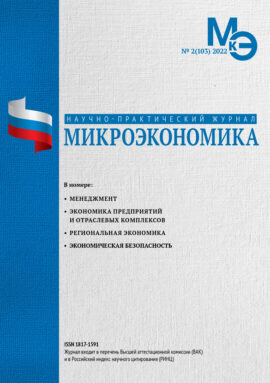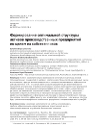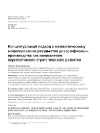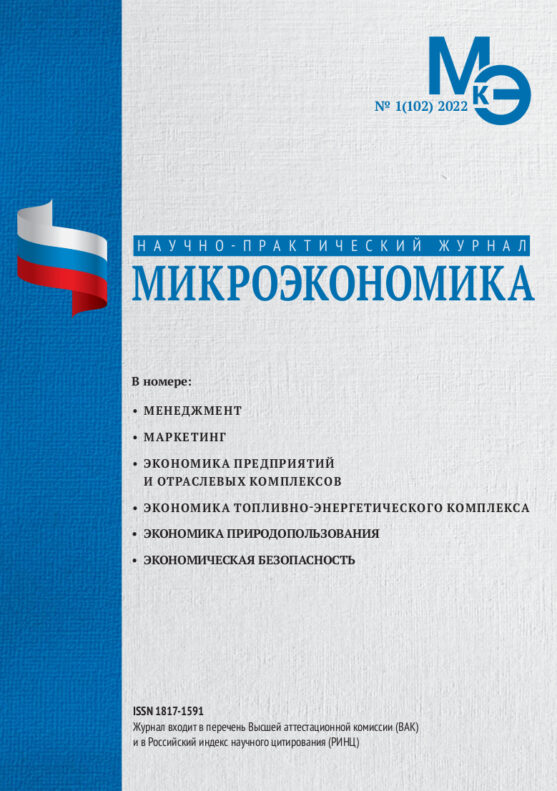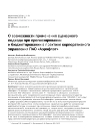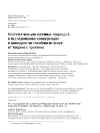DOI: 10.33917/mic-4.105.2022.24-33
This article evaluates the financial potential and corporate asset management policy of RUSAL URAL JSC in the context of economic sanctions. It is established that RUSAL URAL JSC combines an aggressive policy of managing current assets and an aggressive type of policy of managing current liabilities. Thus, a comprehensive operational management policy can also be characterized as aggressive. JSC RUSAL URAL has low ratings for almost all components of the financial potential of the corporation (FPC), therefore, it can be assigned a low level of FPC. Thus, the corporation is not financially stable. In order to improve the financial position of the corporation, increase its stability and solvency, it is possible to change the policy of managing current liabilities from aggressive to moderate, i.e. reduce the share of short-term loans in the total amount of liabilities.
References:
1. Bezpalov V.V. The mechanism of restructuring the management system of an industrial enterprise. Publishing house: Knorus. Moscow, 2013. 169 p. (In Russ.).
2. Ksenofontova H.Z., Filatov V.V., Mishakov V.Yu., Nechaev B.P., Osinskaya T.V., Panov S.A. Transformation of the knowledge structure of managers of an industrial company – a source of development of their new competencies: a regional aspect. News of higher educational institutions. Technology of the textile industry. 2020;4(388):157-164. (In Russ.).
3. Filatov V.V., Dorofeev A.Yu., Deeva V.A., Knyazev V.V., Kobulov B.A., Kobiashvili N.A., Mukhina T.N., Palastina I.P., Rudenko O.E., Osinskaya T.V. Theoretical foundations of designing management systems of industrial enterprises in conditions of economic instability. Moscow, 2008. (In Russ.).
4. Filatov V.V., Alekseev A.E., Shlenov Yu.V., Vorobyev D.I., Dorofeev A.Yu., Dolgova V.N., Zhenzhebir V.N., Pshava T.S., Fadeev A.S., Fedorov B.K., Shestov A.V. Machine-building complex of the Russian Federation: sectoral, regional and strategic aspects of development. Kursk, 2017. (In Russ.).
5. Bobryshev A.D., Tumin V.M., Savelyev A.V., Alenina E.E., Trifonov V.A. The place of infrastructure in the innovative ecosystem of industry. In the collection: Achievements in the field of economics, business and management research (AEBMR). 2022. pp. 37-43.
6. Gumerov A.V., Mukhomorova I.V., Sadykova R.R., Fatihova L.E., Chikisheva N.M., Simonova L.M., Alenina E.E. The program “Client’s voice” as a tool for business structure innovation. Journal of Sustainable Development. 2015;8(3):263-270.
7. Kadyrova O.V., Polyanskaya O.A., Dymova O.O., Bespalova V.V., Okomina E.A. Methods of evaluating the effectiveness of the organization of maintenance and repair at the enterprise. In the collection: Achievements in Economics, Business and Management Studies (AEBMR). Materials of the International Scientific and Practical Conference «Russia 2020 – a new reality: Economy and Society». 2021. pp. 173-176.
8. Tatarenko V.N., Polyanskaya O.A., Shaitarova O.E., Tereshchenko S.V., Melentyeva N.I. Synergetics of subject-object interactions in the context of the digital paradigm. In the collection: IOP Conference Series: Earth and Environmental Science. 2. Ser. «II All-Russian Scientific and Technical Conference «Digital technologies in forestry». 2021. p. 012032.


